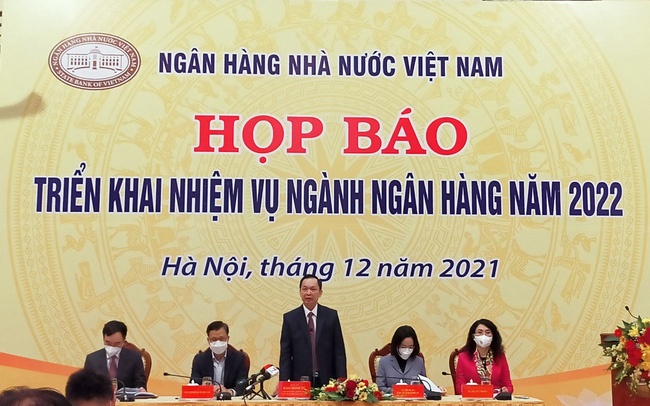SBV sets credit growth target to 14 per cent in 2022
 |
On December 28, SBV Standing Deputy Governor Dao Minh Tu stated at a news conference on banking sector responsibilities in 2022 that credit growth has reached 12.97 per cent so far.
Furthermore, credit growth will be more favourable in the last days of the year, reaching around 14 per cent.
According to the Deputy Governor, the SBV established a credit growth objective of 12 per cent for 2021.
During the challenging times, the central bank has proactively assisted commercial banks and their clients to recover faster as well as execute programmes to extend payback time.
In some specific cases, the SBV has boosted the credit growth target for new loans.
Deputy Governor Tu also stated that the SBV would increase its lending growth objective to around 14 per cent in 2022 and will be more flexible in its operational approach.
“Credit will be allocated to sectors based on each bank's credit growth limit quota and other operational metrics,” he said. “The banking system, notwithstanding, would apply stringent control over at-risk businesses, particularly keeping a firm hand over their real estate assets, risky corporate bonds, and their stocks.”
Particularly, the deputy governor stated that the SBV will continue to prioritise and provide favourable conditions for the residential real estate sector to address genuine consumer demands.
“Speculative real estate and massive, high-risk projects will continue to be thoroughly scrutinised,” he said.
Furthermore, the capital flows for the securities market's healthy and stable development would be encouraged. Capital used for speculative reasons, which causes market volatility, will, on the other hand, be restricted.
"We will take steps to closely monitor credit flows to the real estate and securities industries," Tu stated.
According to Deputy Governor Tu, the bad debt ratio on the balance sheet is currently 1.9 per cent, up 0.21 per cent compared to the end of last year; on-balance-sheet bad debt and unresolved debt sold to the Vietnam Asset Management Company (VAMC) was 3.79 per cent.
The total amount of bad debts on the balance sheet, including debt sold to VAMC and contingent debt restructured in accordance with Circulars 01, 03, and 14, is 8.2 per cent.
"Increasing bad debt is undesirable but it is a force majeure owing to the COVID-19 outbreak," stated Deputy Governor Tu.
What the stars mean:
★ Poor ★ ★ Promising ★★★ Good ★★★★ Very good ★★★★★ Exceptional
Related Contents
Latest News
More News
- Banks gear up for massive capital increases (December 18, 2025 | 17:04)
- Securing capital and efficiency for Vietnam’s 2026-2030 growth ambitions (December 17, 2025 | 10:00)
- Energy sector in need of blended finance mechanisms (December 17, 2025 | 09:00)
- Vietnam still has room to mobilise capital for sustainable growth (December 17, 2025 | 08:57)
- Long-term capital seen as key hurdle to green growth (December 16, 2025 | 08:00)
- Gold prices swing amid tax debate and import uncertainty (December 15, 2025 | 18:04)
- Agribank frames bank credit as catalyst for green growth (December 15, 2025 | 17:59)
- Vietnam’s green transition demands collective financial action (December 15, 2025 | 12:00)
- VIR workshop highlights capital and policy for sustainable development (December 15, 2025 | 11:00)
- Promoting digital assets initiative in Vietnam (December 13, 2025 | 09:30)

 Tag:
Tag:




























 Mobile Version
Mobile Version